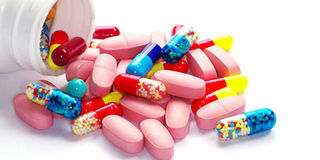Microbial resistance now global threat

Misuse of antibiotics — taking them when you don’t need them — speeds up resistance. PHOTO | FILE | NATION MEDIA GROUP
What you need to know:
- It is important for health providers to stand their ground; be the health provider the patient needs, not the one they want.
- Patients should always seek the advice of a healthcare professional before taking antibiotics and handle the drugs with care.
Antibiotic resistance renders the drug ineffective in killing or controlling the targeted bacteria.
Misuse of antibiotics — taking them when you don’t need them — speeds up resistance.
This kind of drug resistance is more complex and harder to treat. And it can affect anyone.
More than 40 million antibiotic prescriptions in 2011 were unnecessary. The most common reasons for antibiotic overprescription include patients’ lack of knowledge on aetiology, especially those prone to self-medication and get drugs over the counter.
This makes me wonder: Is it possible for antibiotics to be made controlled drugs in Kenya, so that one cannot buy them without a prescription?
BE STEADFAST
The second reason is patients’ demand for a “quick fix”. Some patients believe they know what will help them, yet they go to a doctor.
They insist that they have malaria and they want antimalarials! It is important for health providers to stand their ground; be the health provider the patient needs, not the one they want.
Thirdly, physicians desire for improved outcomes and patients’ outcome. No one wants to be labelled the doctor who treats and the patients don’t get well.
And although 0.5-2 per cent of infections that start as viral evolve to bacterial, I’d prefer that these patients come back with symptoms than putting all of them on antibiotics.
Fourth is diagnostic uncertainty — empirical therapy is what is mostly used in most parts of sub-Saharan Africa.
COSTLY ACTIVITY
The most common consequences of inappropriate antibiotics use — such as overprescription, excessive use, inappropriate administration, suboptimal dosing — include unnecessary adverse effects, increased healthcare costs (the median cost of treating a resistant bacterial infection is Sh70,000 globally) and selection of drug-resistant organism infection with multidrug-resistant pathogens.
Although antibiotic prescription rates increased by more four per cent in the past 14 years, 60 per cent of adult prescribed antibiotics and 30 per cent for children are not needed.
Antimicrobial resistance causes 500,000 deaths yearly. Neonatal sepsis kills 214,000 children, a third of them due to drug-resistant bacteria. A child dies every five minutes due to ineffective antibiotic.
Projected annual deaths attributable to antimicrobial resistance by 2050 in Africa is 4,150,000, compared to 22,000 in Europe.
LIFESTYLE
Many patients on anti-tuberculosis drugs do not finish their doses. About four per cent of new TB cases are multidrug- or rifampicin-resistant with 240,000 people having died from the condition in 2016.
Antibiotics development is dwindling. As bacterial infections grow more resistant to antibiotics, companies are pulling out of antibiotic research and fewer new antibiotics are being approved.
In 1990, there were 18 companies researching antibiotics but only four in 2010.
There is a shift from infectious- to lifestyle diseases. No new major antibiotic class has been developed or introduced in the past 30 years. And antibiotic resistance is high and rising.
RESISTANCE
We are slowly drifting back to the pre-antibiotics era, when people would die from diseases that could be easily managed.
Simply using antibiotics creates resistance; the drugs should only be used to treat infections.
Health practitioners have to stop practising defensive medicine. Not all diarrhoeas should be treated with an antibiotic; neither do viral infections such as flu or bronchiolitis.
The percentage of antibiotics used in the food chain is very high. Only 24 per cent of antibiotics used in the US are for humans, with 76 per cent being for livestock.
Out of this, only six per cent accounts for therapeutic purposes. This is where veterinary doctors come in.
An example of how antibiotic resistance spreads is when animals get an antibiotic and develop drug-resistant bacteria in the gut.
COLLABORATE
The bacteria can remain on meat. If the meat is not handled or cooked properly, the bacteria can spread to humans. The same case applies to fertiliser or water containing animal faeces.
If a person gets an antibiotic and develops a drug-resistant bacteria in his gut, he can easily spread it to his family or community, or to other patients when he visits a health facility.
Patients should always seek the advice of a healthcare professional before taking antibiotics and handle the drugs with care.
For the antibiotic resistance battle to be won, all must play their part: Healthcare providers, pharmacists, veterinary doctors and the patients themselves.
Ms Kamau is a locum clinical officer at USIU-A. [email protected]




